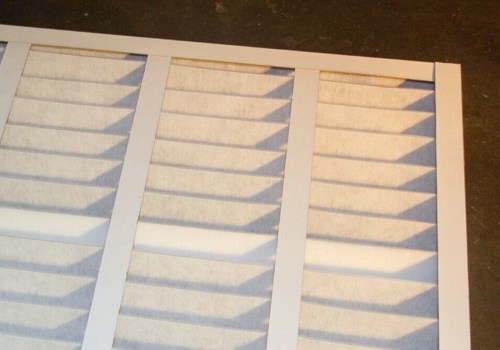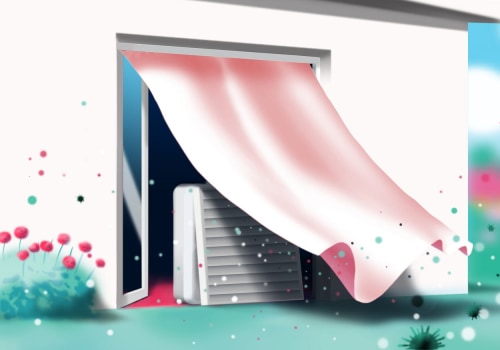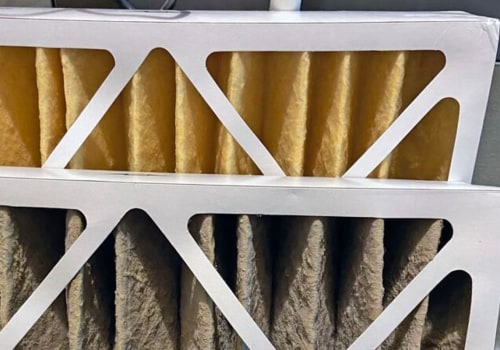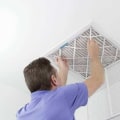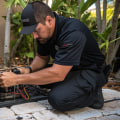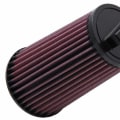Washable air filters can last for an impressive five to 10 years or more, and some manufacturers even claim that they can outlast the HVAC system itself. Disposable air filters, on the other hand, are designed to be replaced every one to three months. This means that a single washable air filter can replace between 20 and 60 disposable air filters. Many people have had these washable filters for more than ten years.
The only reason you'll have to replace it is if you find a better one or if you decide to do so. Of course, normal wear and tear will take its toll on any filter. Most washable filters last at least ten years, so you should be fine if you take good care of it when washing it. Most washable electrostatic oven filters come with a lifetime warranty against defects.
If you're looking for an eco-friendly option, reusable filters are the way to go since they can last five years or more. This means that a washable filter is equivalent to about 20 to 60 filters, each lasting between one and three months. Washing and reusing the same filter is an environmentally friendly measure that you should consider. The air filter you choose has a direct impact on the performance of your air conditioning system, as it is responsible for trapping all types of particles in the air that can damage your health and the expensive components of the system. Even if you clean a washable filter every month, it will start to clog up with dirt over time.
Particles that remain lodged in the filter can slow down the HVAC system's essential airflow over time, which can cause costly problems. Another thing to consider with washable air filters is that electrostatic charge can decrease over time. You can repeatedly wash and reuse a washable air filter, but eventually you'll have to replace it with a new, fully charged one. With that said, a washable and well-maintained HVAC air filter can last 5 to 10 years before it needs to be replaced. Performance also influences cost analysis.
Washable air filters tend to have a lower MERV rating and are less efficient, while a high-quality disposable filter might be better at filtering air. There are a lot of variables at play when considering cost, so be sure to consider these factors when choosing the best HVAC filter for your home. Low-cost fiberglass filters should be changed every 30 days. The more expensive pleated filters can last up to 6 months. A good rule of thumb is to replace pleated filters every 90 days.
If you have electrostatic or washable filters, you should wash them, dry them and reinstall them once a month. Washable filters are more environmentally friendly and, if properly cleaned and reused, can last 5 to 10 years. Green homeowners tend to prefer reusable filters since replacing disposable filters regularly (every three months, as recommended) can result in a lot of waste. Once you remove the old filter, recycling and disposal options will be limited in most areas. By comparison, washable filters are a more environmentally friendly option since they can be reused over and over for an average of 5 to 10 years. In theory, an air filter that is simply rinsed and placed back in the oven can save you time and money - there's no need to go out and buy disposable air filters or oven filters.
A washable filter, due to its plastic-like material, can last up to five years while a household can use 60 or more non-washable filters in the same period of time. While disposable air filters simply need to be replaced every 30 to 90 days, reusable filters need to be washed. UV and HVAC air filters do not use fiberglass, cotton, plastic or any other type of fiber to filter particles from the air - they use electrostatic charge instead. A filter with a very high MERV rating will be very dense - this means that your HVAC equipment will work harder to extract air through the filter. When buying a reusable air filter, it's important to understand that not everyone is the same - the MERV scale ranges from 1 to 16 where lower numbers are less filtering power and higher numbers are very dense first-line air filters. This action will prevent these dust particles from entering your home and provide you with cleaner air and a cleaner home - as these particles suspended in the air pass through the medium they become positively charged and quickly adhere to the next layers of the electrostatic filter just as static accumulates on the feet of socks when walking on carpet or iron filings would stick to a magnet. They help homeowners by removing pollutants from the air reducing symptoms related to allergies asthma and other respiratory diseases. When you have washable filters there's no need to go out and buy a replacement one every time you have a dirty filter - simply rinse it off replace it in your HVAC system (following the directional airflow guidelines if any) and let ventilation airflow completely dry the clean air filter. In general disposable fiberglass HVAC filters are the most common and affordable type of furnace filter but they must be replaced regularly to maintain HVAC efficiency and air quality while washable air filters don't have a strong reputation for their air purifying performance and have an average MERV rating of between 1 and 4.The best fit for your HVAC system depends on several factors such as your budget air quality unit longevity and ease of use.

